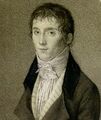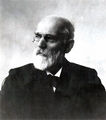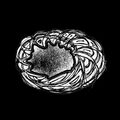Template:Selected anniversaries/March 7: Difference between revisions
No edit summary |
No edit summary |
||
| Line 1: | Line 1: | ||
<gallery> | <gallery> | ||
||1625: Johann Bayer dies ... lawyer and cartographer. | ||1625: Johann Bayer dies ... lawyer and cartographer. No DOB. Pic search: https://www.google.com/search?q=johann+bayer | ||
File:Joseph_Nicéphore_Niépce.jpg|link=Nicéphore Niépce (nonfiction)|1765: Inventor [[Nicéphore Niépce (nonfiction)|Nicéphore Niépce]] born. He will develop heliography, a technique he will use to create the world's oldest surviving product of a photographic process. | File:Joseph_Nicéphore_Niépce.jpg|link=Nicéphore Niépce (nonfiction)|1765: Inventor [[Nicéphore Niépce (nonfiction)|Nicéphore Niépce]] born. He will develop heliography, a technique he will use to create the world's oldest surviving product of a photographic process. | ||
| Line 8: | Line 8: | ||
File:Antoine Becquerel.jpg|link=Antoine César Becquerel (nonfiction)|1788: Physicist and academic [[Antoine César Becquerel (nonfiction)|Antoine César Becquerel]] born. He will pioneer the study of electric and luminescent phenomena. | File:Antoine Becquerel.jpg|link=Antoine César Becquerel (nonfiction)|1788: Physicist and academic [[Antoine César Becquerel (nonfiction)|Antoine César Becquerel]] born. He will pioneer the study of electric and luminescent phenomena. | ||
||1792: John Herschel born ... mathematician and astronomer. | ||1792: John Herschel born ... mathematician and astronomer. Pic. | ||
||1809: Jean-Pierre Blanchard dies ... inventor, best known as a pioneer in balloon flight. | ||1809: Jean-Pierre Blanchard dies ... inventor, best known as a pioneer in balloon flight. | ||
| Line 64: | Line 64: | ||
||1951: William Draper Harkins dies ... chemist, notably for his contributions to nuclear chemistry. Harkins researched the structure of the atomic nucleus and was the first to propose the principle of nuclear fusion,[1][2] four years before Jean Baptiste Perrin published his theory in 1919-20. His findings enabled, among other things, the development of the H-bomb. Pic search: https://www.google.com/search?q=William+Draper+Harkins | ||1951: William Draper Harkins dies ... chemist, notably for his contributions to nuclear chemistry. Harkins researched the structure of the atomic nucleus and was the first to propose the principle of nuclear fusion,[1][2] four years before Jean Baptiste Perrin published his theory in 1919-20. His findings enabled, among other things, the development of the H-bomb. Pic search: https://www.google.com/search?q=William+Draper+Harkins | ||
||1954: Otto Diels dies ... chemist and academic, Nobel Prize laureate. | ||1954: Otto Diels dies ... chemist and academic, Nobel Prize laureate. Pic. | ||
||1954: Ludwik Hirszfeld dies ... microbiologist and serologist. He is considered a co-discoverer of the inheritance of ABO blood types. Pic. | ||1954: Ludwik Hirszfeld dies ... microbiologist and serologist. He is considered a co-discoverer of the inheritance of ABO blood types. Pic. | ||
Revision as of 07:14, 28 February 2019
1765: Inventor Nicéphore Niépce born. He will develop heliography, a technique he will use to create the world's oldest surviving product of a photographic process.
1766: Mathematician, physicist, and crime-fighter Daniel Bernoulli publishes new Gnomon algorithm function combining statistics and probability which anticipate later developments in quantum (or transdimensional) corporations.
1788: Physicist and academic Antoine César Becquerel born. He will pioneer the study of electric and luminescent phenomena.
1875: Flying bison (Bison pterobonasus) sighted near Roswell, New Mexico.
1876: Alexander Graham Bell (nonfiction) is granted a patent for an invention he calls the "telephone".
1875: Gambling Den Fight wins Royal Society award for most exciting new illustration of the year.
1886: Mathematician and physicist G. I. Taylor born. He will make major contributions to fluid dynamics and wave theory.
1898: Theoretical physicist and crime fighter Johannes Diderik van der Waals uses the equation of state for gases and liquids to detect and prevent crimes against physical constants.
1917: Pioneering computer scientist and programmer Betty Holberton born. She will be one of the six original programmers of ENIAC, the first general-purpose electronic digital computer, and the inventor of breakpoints in computer debugging.
1950: Cold War: The Soviet Union issues a statement denying that Klaus Fuchs served as a Soviet spy.
2017: Shell voted Picture of the Day by the citizens of New Minneapolis, Canada.
2019: Steganographic analysis of Confessions of a Quantum Artist-Engineer (1) unexpectedly reveals "at least a megabyte" of previously unknown Gnomon algorithm functions.











